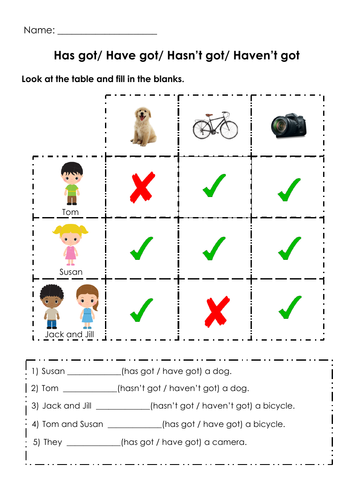Have you ever stared at a sentence, debating whether to use “hasn’t” or “haven’t”? It’s a common grammar conundrum, and it’s easy to feel like the rules are constantly shifting. But fear not! This article will provide you with a clear, concise, and comprehensive guide to understanding the difference between “hasn’t” and “haven’t,” empowering you to write with confidence and accuracy.

Image: tapchicuoihoi.com
Understanding these contractions is vital because they impact not only the correctness of your writing but also how you articulate your thoughts. Whether you’re writing an email, composing a blog post, or crafting a formal document, mastering the use of “hasn’t” and “haven’t” is crucial for clear and persuasive communication.
Deconstructing the Contractions: A Breakdown of “Hasn’t” and “Haven’t”
Let’s start by breaking down the components of these contractions. “Hasn’t” is a contraction of “has not,” while “haven’t” is a contraction of “have not.” The key difference lies in the verb form used in each: “has” versus “have.”
Singularity and Plurality: The Root of the Distinction
The verb “has” signifies the singular form, indicating that the subject is a single entity. In contrast, “have” signals the plural form, representing a subject comprised of multiple entities. The choice between “hasn’t” and “haven’t” is determined by the subject’s singular or plural form.
Illustrative Examples
- Singular Subject: “The cat hasn’t eaten its breakfast.” (The subject is a singular “cat”).
- Plural Subject: “The children haven’t finished their homework.” (The subject “children” is plural).

Image: www.pinterest.com.mx
Navigating the Time Continuum: Tense Considerations
The use of “hasn’t” and “haven’t” is also influenced by the tense of the verb. These contractions are primarily used in the present perfect tense, indicating actions that began in the past and continue to the present or have a lasting effect on the present.
- Present Perfect Tense: Examples include:
- “She hasn’t seen her friends in months.”
- “We haven’t been to the beach this summer.”
Beyond the Basics: More Subtle Nuances
While the singular/plural and tense rules are fundamental, there are a few additional nuances to keep in mind:
- Negative Form: Both “hasn’t” and “haven’t” express a negative action, indicating that the subject did not do something.
- Informal vs. Formal: In formal writing, it’s often recommended to avoid contractions like “hasn’t” and “haven’t” and use the full forms “has not” and “have not” instead. However, in informal contexts, these contractions are widely accepted and add a natural and conversational tone.
Expert Insights and Actionable Tips
To further elevate your understanding of “hasn’t” and “haven’t,” let’s delve into actionable tips shared by esteemed language experts:
- The Subject is Key: Always prioritize identifying the subject of your sentence to determine whether to use “hasn’t” (singular subject) or “haven’t” (plural subject).
- Practice Makes Perfect: As with any grammar rule, the best way to gain confidence in using “hasn’t” and “haven’t” correctly is through consistent practice. Read widely and pay close attention to how these contractions are used in various contexts.
Hasnt Vs Havent
A Call to Empower Your Writing
By comprehending the nuances of “hasn’t” and “haven’t,” you’re empowering yourself to express your thoughts precisely and confidently. Whether you’re a student, a professional, or simply someone who wants to polish their writing, mastering these contractions will enhance your communication skills and elevate the clarity of your writing.
Now, go forth and write with conviction! Remember, the power of effective communication lies in the intricacies of language, and understanding these seemingly simple distinctions is an essential step in that journey.





